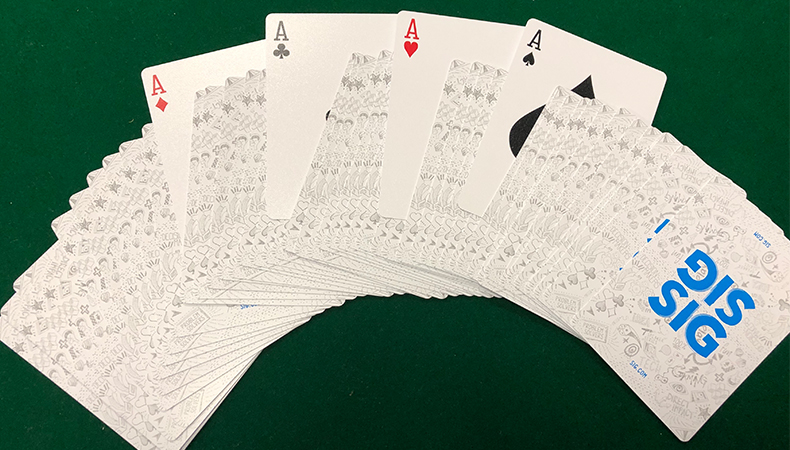
Much of the content of this blog has focused on games and gambling, and an underlying theme in many of the posts has been the mathematics that underlie decisions or approaches to play. There is another area where mathematics comes up in clever but unexpected ways: magic. (And no, this is not a post about the card game Magic: The Gathering.)
A word about magic tricks: While many people like to focus on the “magic” part of them, the truth is that the way they work is as “tricks.” That is, any magic performed for audiences or friends is taking advantage of perceptual biases, misdirection, sleight of hand, or some other “trick” to fool or amaze the viewer.
What follow are several tricks, and the basis for each of these tricks is mathematics. It is important to note that I did not come up with any of these tricks. The tricks themselves, or the underlying ideas for the tricks, come from Martin Gardner, Raymond Smullyan((Smullyan, Raymond M., et al. Alice in Puzzle-Land: a Carrollian Tale for Children under Eighty. Dover Publications, 2011.)), Arthur Benjamin((Benjamin, Arthur. The Magic of Math: Solving for x and Figuring out Why. Basic Books, 2016.)), Persi Diaconis((Diaconis, Persi, et al. Magical Mathematics: the Mathematical Ideas That Animate Great Magic Tricks. Princeton University Press, 2016.)), Ron Graham, the wonderful productions at Numberphile, and all of the great minds who came before these people to inspire them.
I am also aware of the magician’s creed not to reveal how a trick is performed. In this respect, I agree with Penn and Teller, two of the greats in the history of magic, who have been willing to reveal their methods in order to foster an appreciation for the “tricks” over the “magic.”
I encourage you to take time to think about the tricks and how they work before clicking on the “reveal” video for these tricks. See if you can back into how these tricks work before pressing play.




Subscribe Now
Get each new post sent straight to your inbox